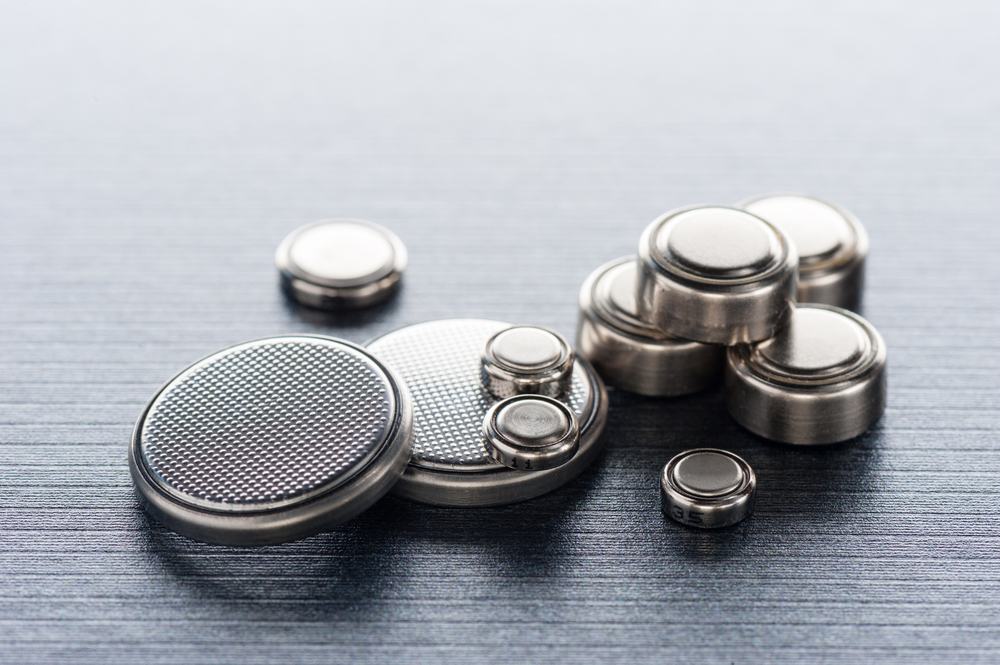Associate Professor Dr Hardip Singh Gendeh, a specialist ear, nose, and throat (ENT) surgeon, reveals the shocking truth about everyday objects that send children to the emergency room frequently– and why prevention could make a difference between life and death.
WORDS ASSOCIATE PROFESSOR DR HARDIP SINGH GENDEH
 FEATURED EXPERT FEATURED EXPERTASSOCIATE PROFESSOR DR HARDIP SINGH GENDEH Lecturer and Specialist Ear, Nose & Throat Surgeon Department of Otorhinolaryngology, Head and Neck Surgery Faculty of Medicine Universiti Kebangsaan Malaysia |
THE CHOKING HAZARDS AT HOME
- Every day, at least three children worldwide choke to death on food or small objects.
- In European Union countries alone, 50,000 children up to 14 years old experience choking incidents annually, with 500 proving fatal.
- Choking is more common among males.
These are not just statistics. They represent preventable tragedies that could happen to any family, anywhere.
As an ENT specialist who sees foreign body cases almost daily, I witness firsthand how quickly a curious child’s exploration can turn into a medical emergency.
What many parents do not realize is that some seemingly harmless household items pose far greater dangers than others.
THE REALITY OF CHOKING INCIDENTS IN CHILDREN
Children up to 14 years old face the highest risk of choking, but the danger peaks in the youngest age groups.
A study conducted by the Universiti Kebangsaan Malaysia (UKM) Faculty of Medicine and Hospital Canselor Tuanku Muhriz (HCTM) revealed that:
- 5% of all ENT visits involve foreign bodies – meaning every 3 to 4 patients out of 100 seek help because something is stuck where it should not be.
- 65% of these cases involve children.
- The most common inorganic foreign bodies are plastic, metal, and graphite (mechanical pencil fillings, broken pencil tips, pencil stubs, etc).
- 5% of children with foreign bodies in their airways or digestive system require hospitalization, with 25% of these children needing intensive care unit treatment.
What makes these incidents particularly challenging is that most of the cases are unwitnessed.
Parents often have no idea their child has swallowed or inhaled something dangerous until symptoms appear —and by then, precious time may have been lost.
COMMON TYPES FOREIGN BODIES IN CHOKING CASES
Foreign bodies fall into two main categories:
Organic Materials
- Natural substances like food that the body can potentially break down.
- Common culprits include peanuts, watermelon seeds, and coconut kernels.
- While these can cause choking, they may eventually dissolve or pass through the system.
Inorganic Materials
- Include metals, plastics, and other manufactured items that the body cannot break down.
- Our research shows these are more common in children.
- Items like beads, toy parts, springs, hair clips, ballpoint pen tips, and pencil caps frequently cause problems.
However, two types of inorganic objects deserve special attention due to their unique dangers:
#1 Button Batteries
Button batteries may look harmless, but they are medical emergencies waiting to happen.
- The warm, moist environment inside the human body causes these batteries to leak corrosive chemicals that burn surrounding tissues.
- Additionally, the battery creates small electrical currents between its positive and negative poles, causing electrical burns.
These dual actions can eat into and create holes in delicate tissues – whether in the nasal septum (the wall between nostrils), airways, or intestinal walls.
- If holes develop in the intestine, gut contents can spill into the abdomen, causing life-threatening infections that may spread throughout the body.
- The danger is compounded by the fact that button batteries look remarkably like coins on X-rays, potentially delaying proper diagnosis.
- Only subtle signs like a faint halo or ring around the battery can help doctors differentiate between the two.
#2 Magnets
A single magnet poses minimal risk, but multiple magnets create a catastrophic scenario.
- When 2 or more magnets are swallowed, they attract each other with tremendous force.
- If they end up in different parts of the intestine, they will pull toward each other, trapping intestinal walls between them.
- This magnetic attraction cuts off blood supply to the trapped tissue, eventually creating holes in the intestinal wall.
- Like button batteries, this can lead to spillage of intestinal contents and life-threatening infections.
The fact that magnets are commonly found at home, it makes the danger even more pressing.
- Button batteries power countless household devices (television remotes, watches, car key fobs, etc) and are easily accessible when battery compartments are not properly secured.
- Similarly, decorative refrigerator magnets, often collected as travel souvenirs, sit at child-eye level in most kitchens.
TREATMENT IS A RACE AGAINST TIME
When a child arrives with a suspected foreign body, every second counts more so when it results in chocking indicating an airway compromise.
The challenge intensifies with unwitnessed incidents.
- We rely heavily on detective work, such as examining the child for signs like unusual breathing patterns, listening for abnormal lung sounds, and sometimes using imaging studies.
- While metal objects show up clearly on X-rays, plastic items often require more advanced imaging or direct visualization with scopes.
The treatment approach depends on where the object is located and what type it is.
Foreign Objects Stuck in the Airway
- We typically need to place the child under general anesthesia and use specialized scopes to locate and remove the foreign body.
- This procedure requires careful coordination between ENT specialists, pediatricians, anaesthesiologists, and intensive care teams to ensure adequate oxygen supply is given to the child throughout the process.
- In severe cases where the airway is completely blocked, we may need to perform a tracheostomy – creating an opening directly in the neck to access the trachea (windpipe) for breathing and foreign body removal.
| Sometimes, children may aspirate on food substances. Aspiration occurs when food goes down into the airways rather than the swallowing pipe (oesophagus). These children may develop recurrent lung infections that require multiple hospitalizations. |
Foreign Objects Stuck in the Digestive System
- Objects in the digestive system may require similar scope procedures through the mouth, or sometimes surgery if complications have already developed.
ADVICE FOR PARENTS: PREVENTION IS EVERYTHING
The most effective treatment for foreign body incidents is prevention. Here are critical steps every parent and caregiver should take:
Secure Your Environment
- Never leave remote controls uncovered or batteries lying around.
- Avoid leaving decorative items like beads or broaches within reach.
- Regularly scan carpeted floors where small objects can easily hide.
- Be cautious during piggyback rides, as children may pick beads or buttons from your clothing.
Food Safety Practices
- Introduce solid foods only at appropriate ages after teething begins. Consult a paediatrician for more information.
- Read food labels and age warnings carefully.
- Cut large or chewy/stretchy foods into small pieces. Spherical foods are particularly common choking hazards.
- Supervise young children during meals.
- Avoid feeding children in moving vehicles.
- Discourage playing while eating, as more than half of choking incidents occur during such playtimes.
- Consider avoiding large gummy bears and similar ‘sticky’ sweets, which provide little nutrition but high choking risk.
Know the Warning Signs
Learn to recognize these red flags:
- The universal choking sign: holding both hands at the throat
- Inability to speak
- Stopping breathing and turning blue
- Sudden coughing fits
- Noisy breathing during inhalation, exhalation, or both
- Complaints of shortness of breath
- Unresponsiveness
- Recurrent chest infections over a short period
| The risk of choking increases if the child has a habit of inserting objects into their ears, nose, or mouth. You should supervise your child closely if they have this habit, and gently discourage this habit. |
Be Prepared for Emergencies
Every parent, teacher, and caregiver should learn:
- Basic first aid for choking, including the Heimlich manoeuvre
- How to check for obstructing material in the mouth.
When every second counts, this knowledge saves lives!
WHY I AM CONCERNED ABOUT THIS ISSUE
As a curious child, I once inserted tissue paper into my nose, leading to my first hospitalization. The experience of having it removed was far from pleasant, and it gave me firsthand understanding of what these young patients endure.
Since then, I have been striving to promote greater awareness on choking hazards to both healthcare professionals and the public.
Hence, my collaboration with my father, Professor Dato’ Dr Balwant Singh Gendeh, on foreign body research stems from both professional duty and deeply personal experience. As ENT specialists, we see these preventable injuries regularly, and we feel compelled to raise public awareness about dangers lurking in plain sight.
Our shared mission focuses on four key beliefs:
- Foreign body injuries are entirely preventable. Every case represents a missed opportunity for education or environmental modification that could have saved a child from trauma.
- We must raise awareness about seemingly harmless objects that pose serious dangers. Button batteries and magnets appear harmless to most people, but their potential for harm is enormous especially to curious children.
- As medical professionals who witness these incidents regularly, ENT specialists have a responsibility to educate the public and advocate for safety measures.
- We need better systems in place. Malaysia lacks a comprehensive foreign body registry like the European Union’s Susy Safe Project, which tracks choking incidents and guides industry safety standards. We also need stronger regulations governing food safety and toy manufacturing, particularly regarding items sold near schools and online.
Working together with my father has been both professionally rewarding and personally meaningful. It combines our shared medical expertise with our family bond, creating a powerful motivation to protect children from preventable harm.
The goal extends beyond individual families to systemic change. We envision better first aid training for teachers and caregivers, stricter regulations on dangerous products, comprehensive public education campaigns, and robust data collection to guide future prevention efforts.
THE PATH FORWARD
Foreign body prevention requires coordinated effort from parents, schools, healthcare providers, and government agencies. While individual vigilance is crucial, we need systematic changes to create truly safe environments for children.
The stakes could not be higher. Behind every statistic is a child whose life hangs in the balance, and a family facing their worst nightmare. With proper awareness, preparation, and prevention, these tragedies can become increasingly rare.
Our children’s safety depends on recognizing that the most dangerous objects are often the ones we overlook every day. By understanding these risks and taking appropriate precautions, we can transform our homes from potential danger zones into truly safe havens for curious young minds to explore and grow.
| This article is part of our series on health issues related to the ear, nose, and throat. |














